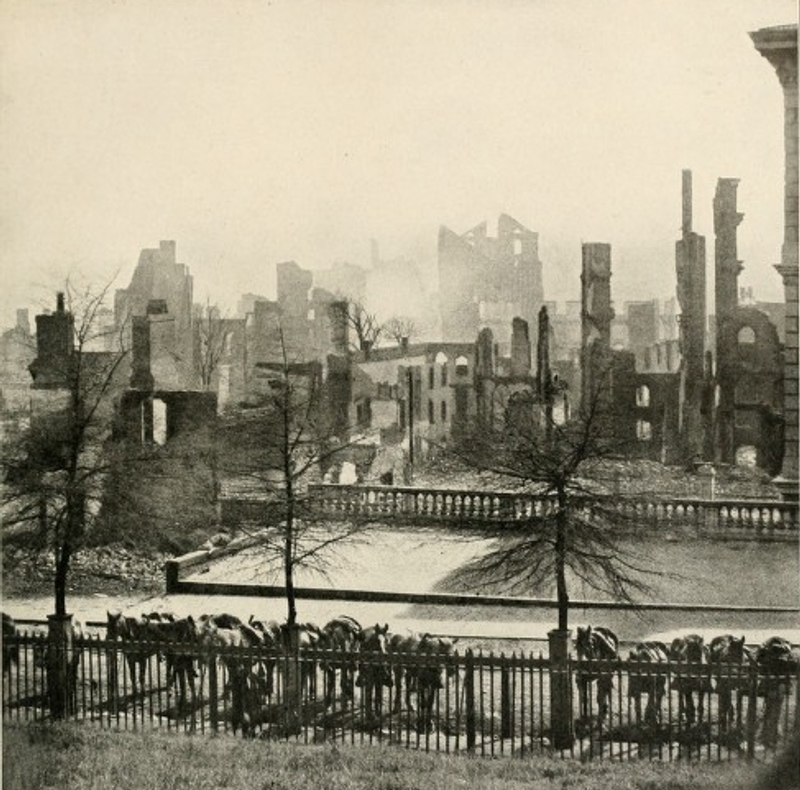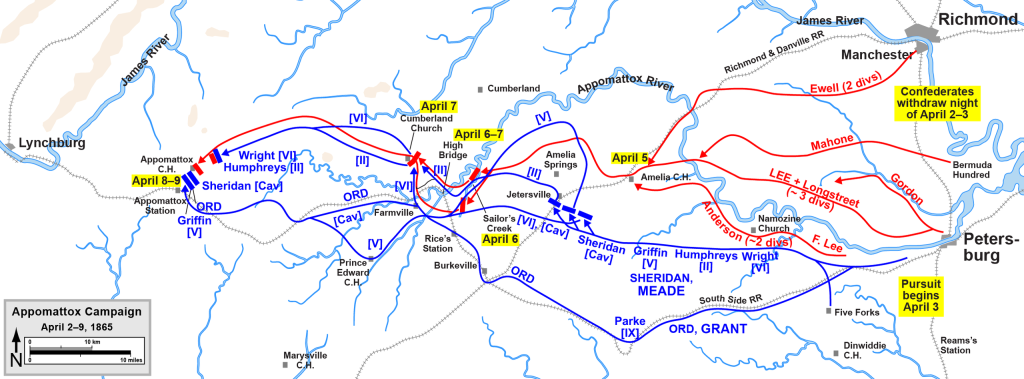
War is cruelty. There is no use trying to reform it. The crueler it is, the sooner it will be over.
William Tecumseh Sherman
April 2015 is the 150th anniversary of the denouement of the American Civil War, the calamity that defined the nation and whose tendrils still refine the consciousness of its people. As history recedes as an area of interest for the average American, the fundamental and inexorable causes leading to the war and the intensity and sacrifice of millions of people to the concept of a cause seems a trite and faded memory of a long ago time. The America that saw ideals as concepts to be defended with life as necessary doesn’t seem real to the current generation, who see the nation as a means of dispensing resources, and not a standard to uphold. To the American of 1861-1865, however, ideals were very real things and were equally real to the farmer from Wisconsin, the plantation owner from Mississippi, the news editor from New York, or the slave laborer in Alabama. For each the ideals were different, but the stakes in losing, total.How to persuade someone to whom losing is not an option, that they have indeed lost, is the centerpiece of any calamitous conflict, and the story of the last 14 days of the civil war are as eventful as any before.
Ramparts has addressed the unique circumstances of the final day of surrender of General Lee’s Army of Northern Virginia before, but of equal historical interest is the final acts that led to the concluding day. As we enter the story 150 years later, a cursory reminder of the tactics leading to the final chapter is appropriate for perspective. Although the Civil War may on the surface seem archaic for its fixed set-piece battles and agonal use of men as expendable targets of attrition, the tactics by both sides following the elevation of General Grant to supreme commander of the Union forces following the victories of July , 1863 at Vicksburg and Gettysburg were extremely modern and innovative. For the Union north, with superior resources and population, the plan outlined by Grant to President Lincoln was continental in scope and consistent with the modern concept that the morale and comfort of the population supporting the enemy army was the true target to weaken and destroy the army. Grant’s comprehensive plan was for General Meade’s Army of the Potomac to find, pin down and decimate Lee’s Army of Virginia while the Army groups of Sherman, Braggs, and Butler were to wreak havoc in the South’s interior, destroying communications, railways, and supplies, bringing the war to the doorstep of the population of the South, and carving up the residual Confederate armies into more and more isolated and digestible units. General Lee’s plans were equally modern. Lee sought to maintain superior ground, interior lines of communication, and bleed the opponent white to such an extent that the never ending war would be too expensive for the northern population to tolerate any longer.
The initial experiences of 1864 suggested Lee would be right as Grant was aggressively drawn in to bloodbath after blood bath in Northern Virginia from the Wilderness to Spotsylvania to Cold Harbor and finally into a miserable trench warfare at Petersburg on the outskirts of Richmond, Virginia, the Confederate capital. In the first thirty days of the Overland campaign, Grant stunningly lost over 54,000 men and was perceived as a ‘butcher’ in the northern press. But the the Army of Northern Virginia was now pinned down, and the rest of Grant’s plan began to play out, with Sherman eventually laying devastation to the deep south through Atlanta, through Georgia to the coast at Savannah, then brutally through the Carolinas. By the end of March, 1865, it was Lee who was reactive and desperate for materials and men, and Grant who was reinforced and aggressive.
Yet, the conflict was fought by men to whom death was preferable to loss of ideal, and despite the staggering differences by this time in both men and material, the end was not one of timid collapse but rather one of a contest of inch by bitter inch. It is often inconceivable to imagine the ability to fight tenaciously when all odds are against you and surrender would allow self preservation, but the sense of hopelessness seems to somehow instill tenacity beyond all sense. A weakened southern army remained a bunch of badgers led by a lion, and Grant still sought the means to somehow crack the will of the committed.
After nine months of battles and siege at Petersburg, the Southern trench lines had finally been stretched to the point of cracking, and Grant determined that if a crack were to be developed, a tsunami would follow. Lee felt the pressure first and attempted a breakout on Grant’s right at Fort Steadman on March 25th,1865, with initial success in puncturing the edge of the northern line only to be crushed by a furious Union counterattack. The southern forces retreated to their trenches but severe damage had been done to Southern infantry strength with over 4000 casualties and no means of reinforcing. Grant seized

the opportunity and on March 29, a crack was finally developed in the impenetrable southern defenses and Grant’s VIth Corp lanced inward and forced the South to contract and support. General Sheridan’s Cavalry force, by this time as feared as any the South had developed swung around the union left to attempt the severing of Lee’s supply lifeline at Five Forks on April 1st, 1865, and the result was catastrophic for the South with envelopment of over 8000 troops of general Pickett and collapse of Lee’s right flank. On April 2nd, Grant found the final crack on the right and the crack became a deluge as two Union Army Corps poured through the decimated defenses. Lee found himself now surrounded on three sides and had to evacuate the trenches of Petersburg and the Confederate capital city of Richmond.
The Army of Northern Virginia was now on the run, and unlike every other time in the war with similar circumstance, such as McClellan after Antietam and Meade after Gettysburg, Grant recognized the opportunity for a final kill and performed a perfect pursuit and destruction. Lee had one chance remaining, to achieve supply support at Appomattox and attempt to rejoin the Southern Army of the Carolinas, now fighting off Sherman’s crushing attacks.

Grant assumed the role of anaconda and pursued, pinned, and cut off fragments of Lee’s support until the envelopment was total on April 9th, 1865 and Lee was forced to acknowledge he was the fox surrounded by hounds, and the end was inevitable. To assume that such considerations led men to becoming self-preserving is to deny that the final 14 day struggle took over ten thousand lives, with neither army letting up an ounce. For both sides, the end justified the sacrifice, and the overwhelming superiority of the Union capacities assured that inexorable force would win out over any desperate heroism. This was a time of heroes however, who drew their own conclusions and inspiration from loyalty to their cause, and fought tooth and nail to the very end.
We are left with the famous stillness at Appomattox, where the overwhelming recognition of finality struck both sides simultaneously. Lee, to whom losing was anathema, and Grant, who saw winning completely the only means to peace, found a way to achieve the peaceful stillness that allowed a reconciliation thought impossible only hours before. One hundred and fifty years later, the victory stands tall as the means of preserving the original principles of the nation, that all men are created equal, and that individuals can have a full say in their destiny. The price that both sides paid to achieve such laudable ideals is incalculable in the extent of the calamity or the effect on the families. It was cruel, but it was necessary and it was purifying, though it took decades to fully wash out the stains.
On this 150th anniversary, we could use a reminder as to the closure we achieved as Americans, and what it required to achieve it. In today’s superficial understanding by most as to the benefits of this great nation, a moment of stillness is in order.